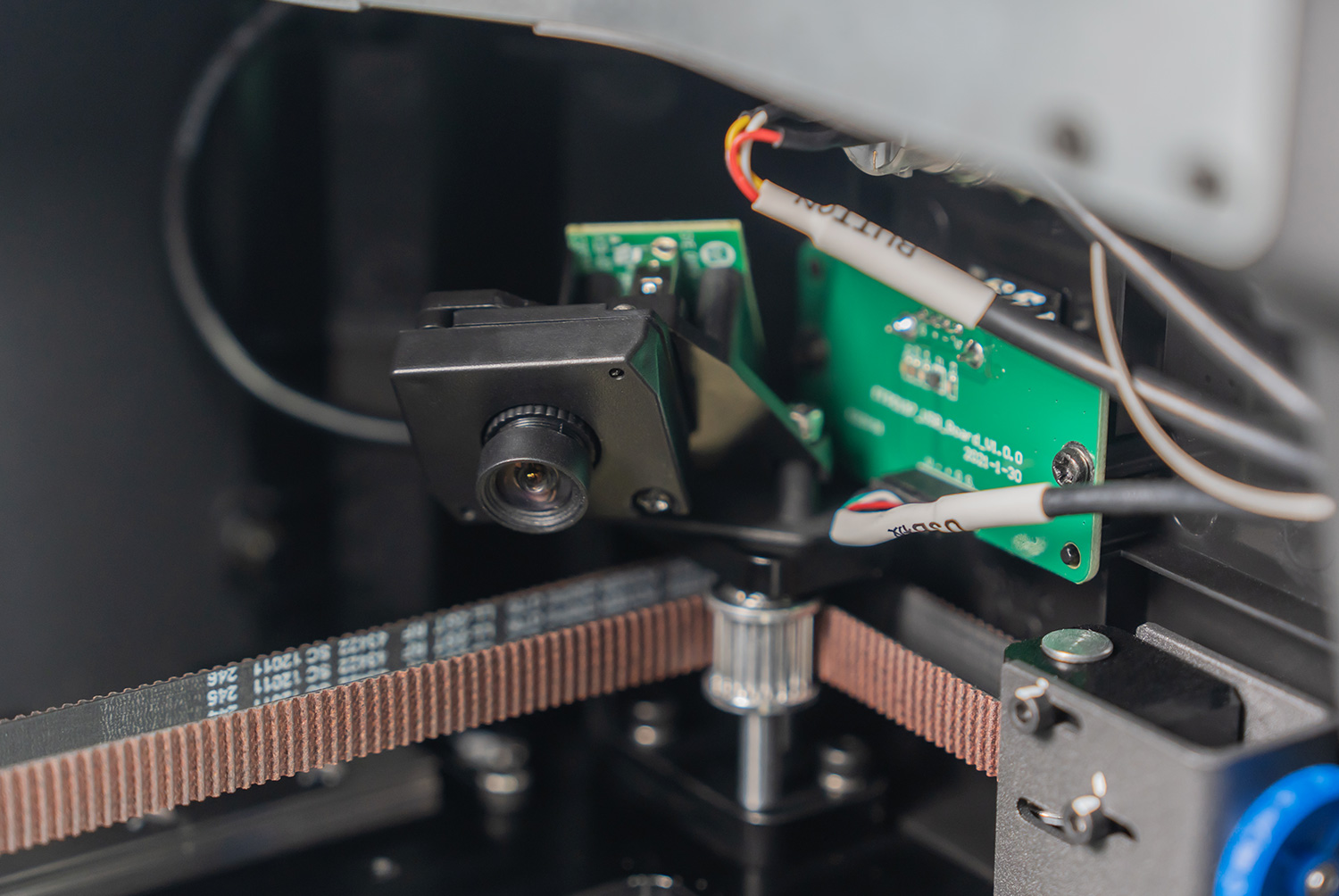This article provides a basic overview of the mechanical components and electrical components of Guider 3 Ultra for you to have a good grasp of Guider 3 Ultra.
¶ Working Principle of Guider 3 Ultra
Guider 3 Ultra prints 3D objects by melting filament, extruding it from the nozzle, and depositing them layer by layer.
For 3D printing, the most common type of model file is the STL format, which can be converted into a format recognized by 3D printers (e.g., GX/G/G-code) using slicing software (e.g., FlashPrint 5). These files contain instructions to precisely control where to move, how fast to move, what path to follow and parameters like temperature and speed.
¶ CoreXY Structure
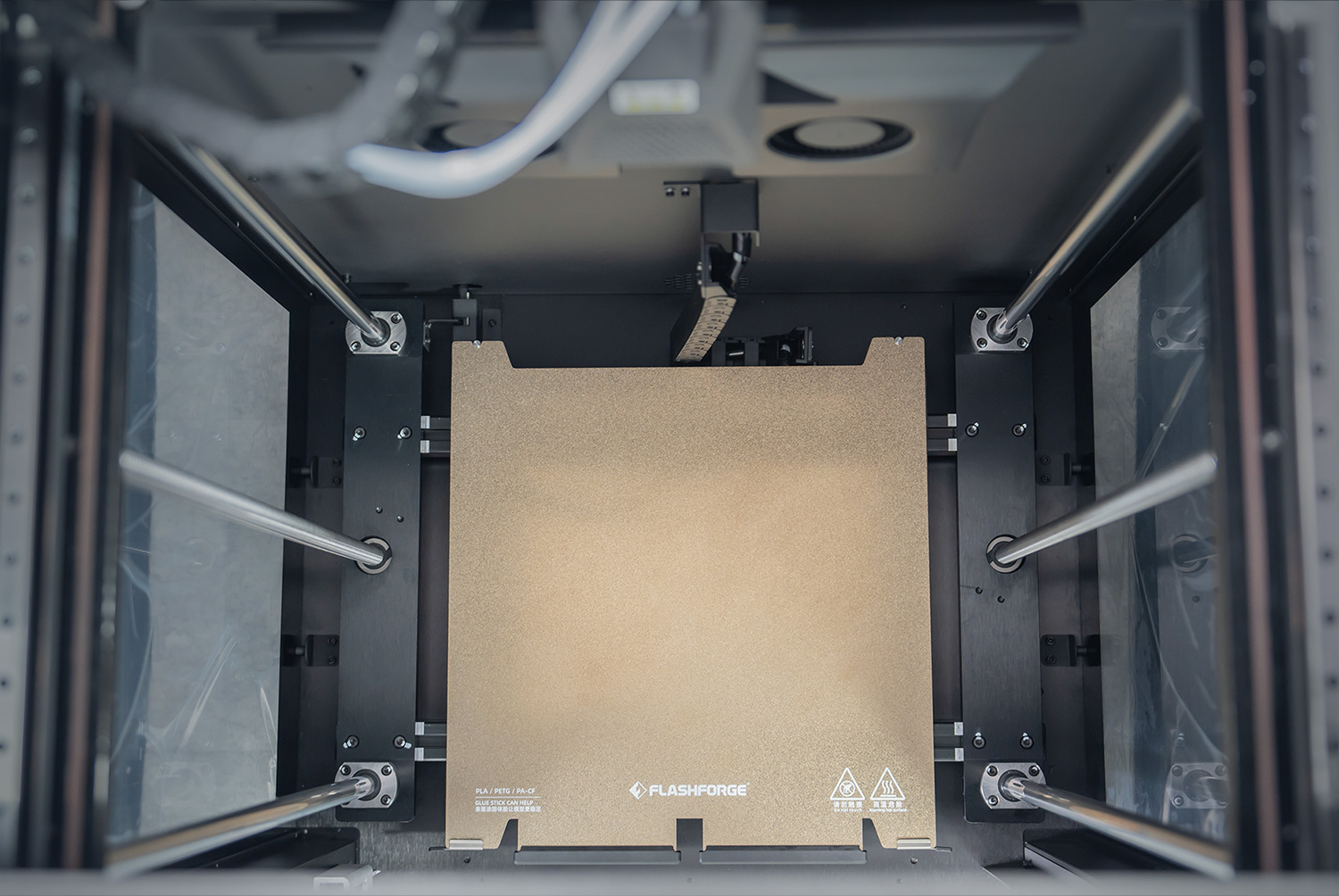
The CoreXY mechanism employs two motors working in unison to control the movement in both the X- and Y-axes. Movement along the X-axis occurs when both motors rotate in the same direction. Movement along the Y-axis occurs when both motors rotate in opposite directions. This design ensures precise and stable movement and allows for rapid acceleration.
The CoreXY structure offers several advantages over traditional 3D printer structures:
1. less inertia. The motors in the CoreXY structure can move simultaneously, so it has much less inertia than other structures. This allows the extruder to be more stable when moving at high speeds, reducing vibration and wobble and improving print quality.
2.higher speed and accuracy. With two motors moving simultaneously, the CoreXY structure can realize higher printing speed. Moreover, by accurately controlling the movement of both motors, higher printing accuracy can be realized, and more detailed models can be printed.
3. Smaller space occupation.The cross-over arrangement of the drive belts in the CoreXY structure results in a more compact path of motion for the extruder. The CoreXY configuration requires less space than other configurations and saves printer bed space.
4.Better stability and reliability. The two drive belts in the Core-xy structure intersect with each other to form a bi-directional tension balance, which effectively eliminates errors caused by inconsistencies in the belt tightening and loosening. This design not only improves the stability of printing, but also extends the life of the printer.
For more information about the CoreXY motion system please visit this link
¶ Z-axis
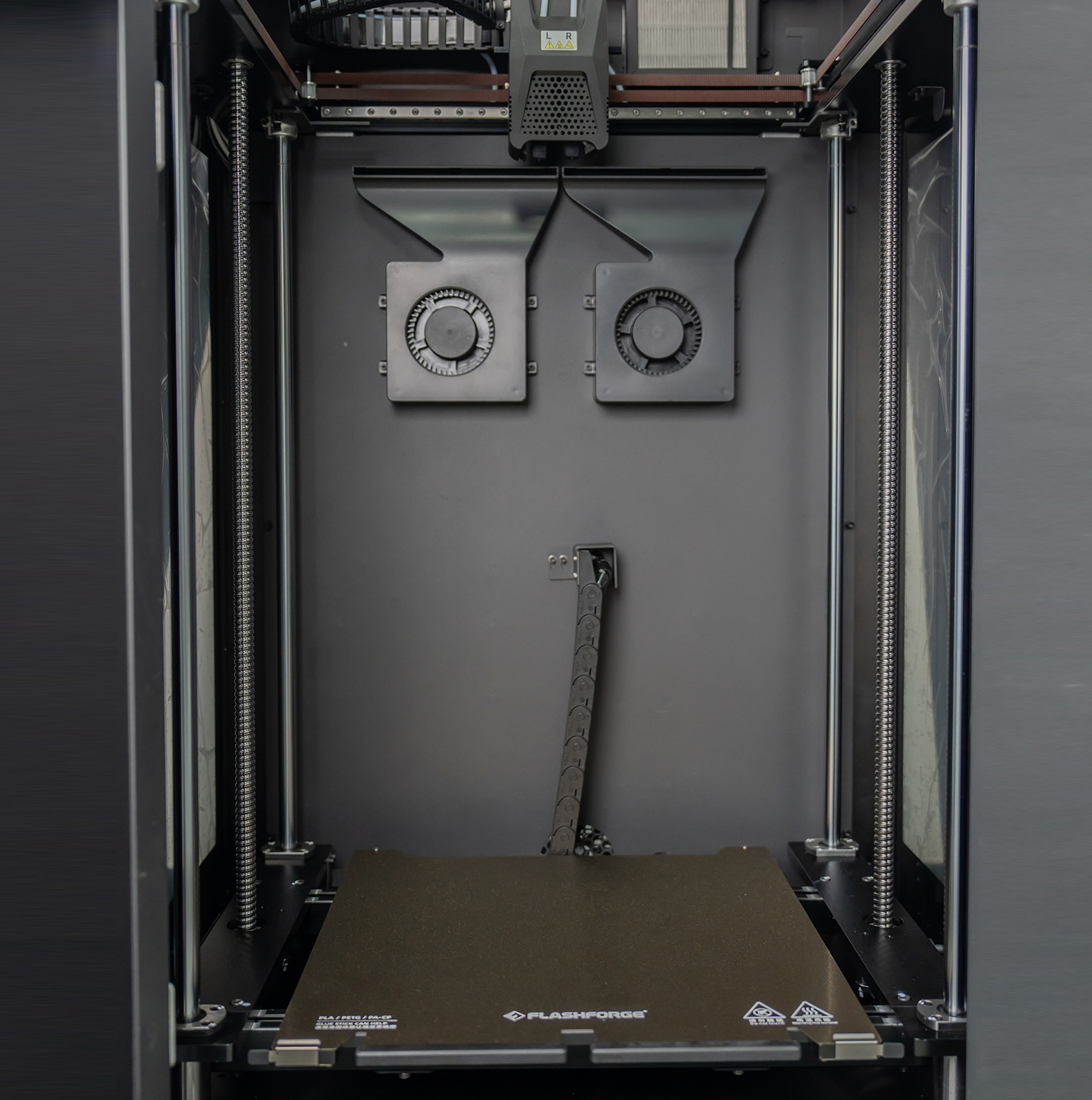
Guider 3 Ultra's Z-axis is composed of two ball screws and four linear shafts. The ball screws are connected to Z-axis stepper motors via belts, and control vertical movement, while the linear shafts provide vertical guidance.
The heated bed has pressure sensors at its bottom, enabling fully automatic Z-axis height calibration and leveling for flawless first layer.
¶ Extruder

The extruder feeds filament to the hot end where it is then melted and extruded. Then 3D objects are created by layer-by-layer deposition of filaments.
After heating the extruder, pressing the extrusion handle allows for filament unloading.
After loosening the quick-release handle, the hot end can be directly pulled out for quick removal.
¶ Hot End
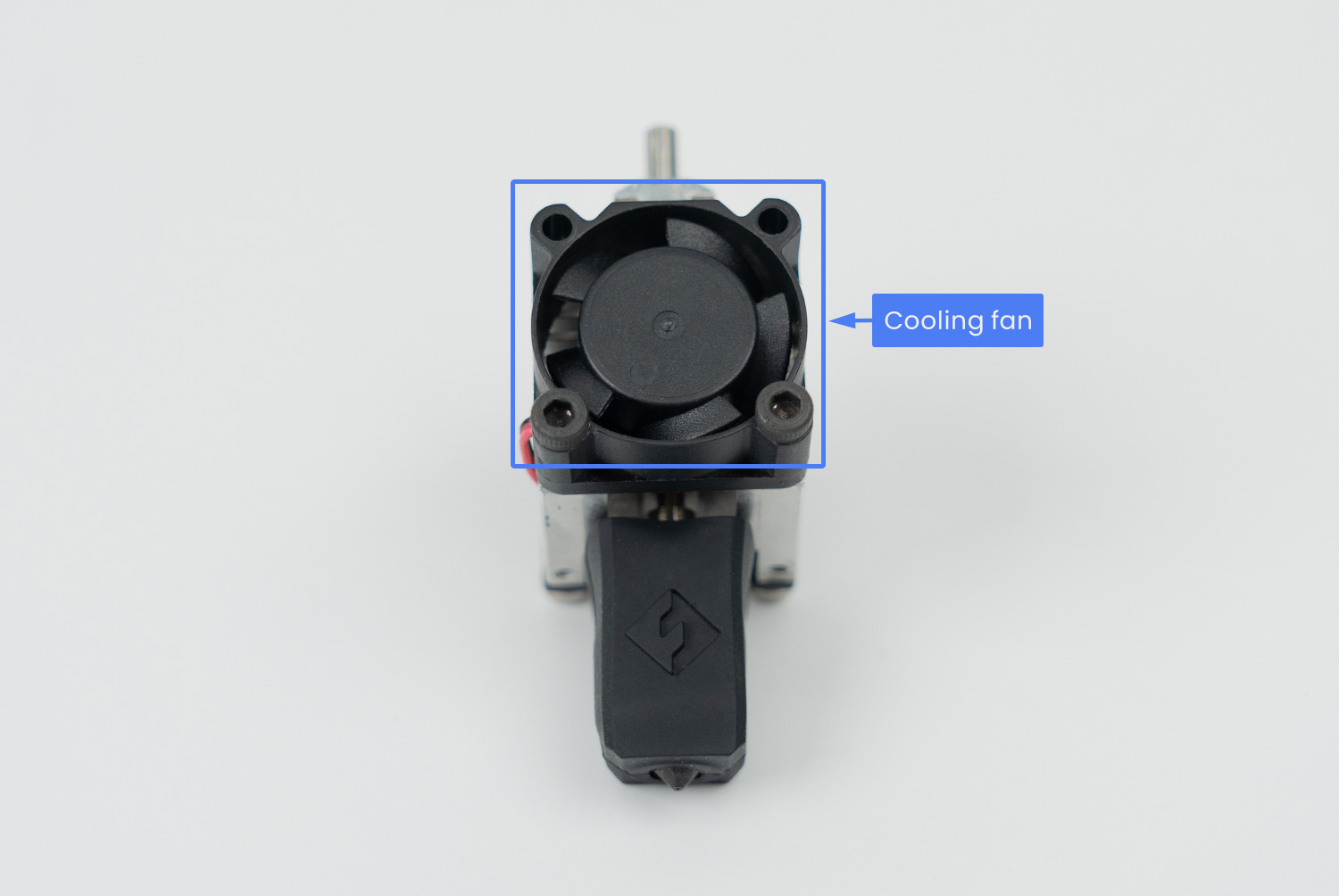
The hot end heats, melts and extrudes the filament layer by layer.
The cooling fan is for dissipating heat from the hot end to prevent clogging.
¶ Heated Bed
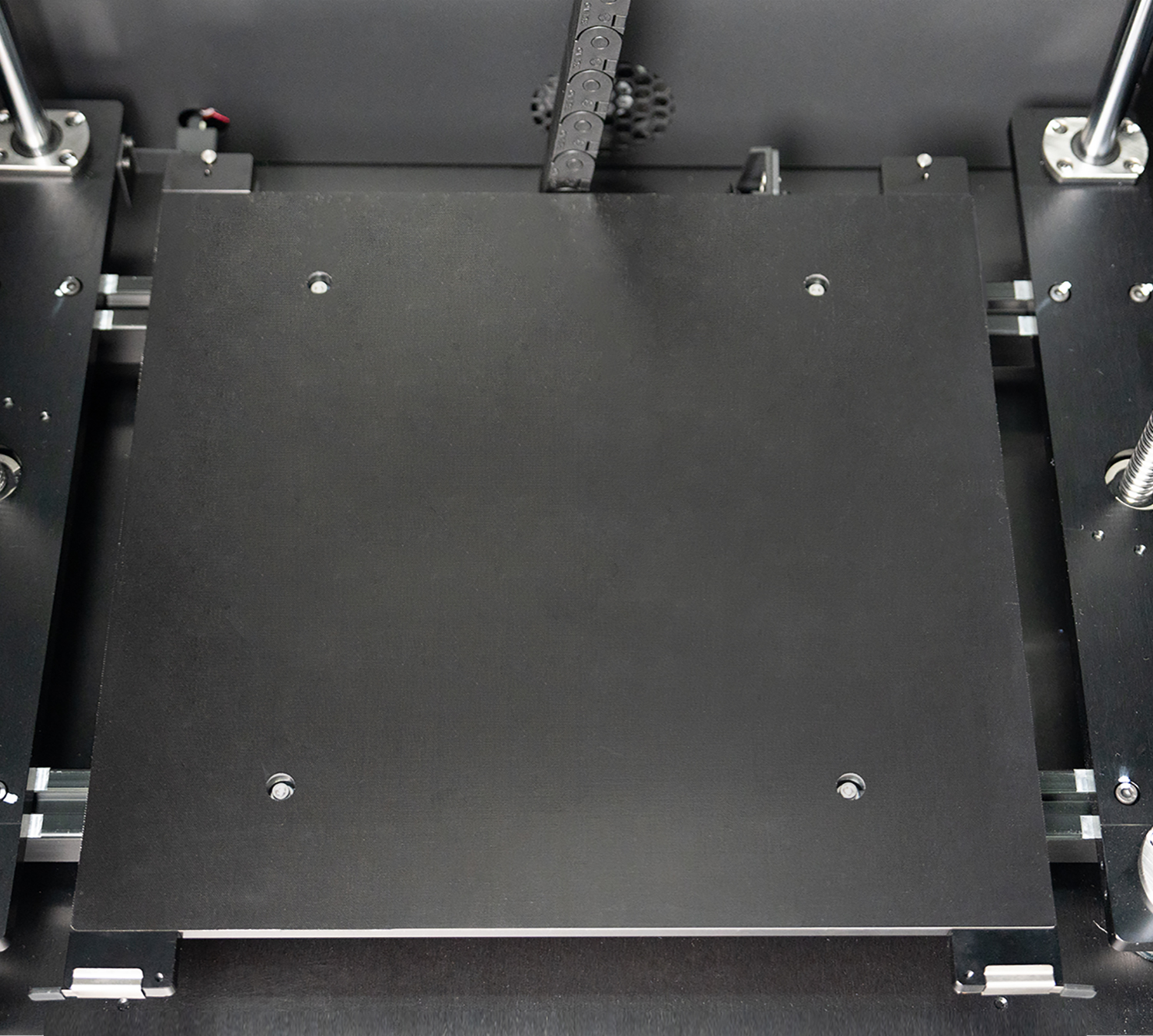
The heated bed is a 3D printer bed that can heat up to various temperatures. Within a suitable range, the higher its temperature, the stronger the bed adhesion, reducing the risk of warping. Guider 3 Ultra's heated bed can heat up to 120°C.
¶ Build Surface
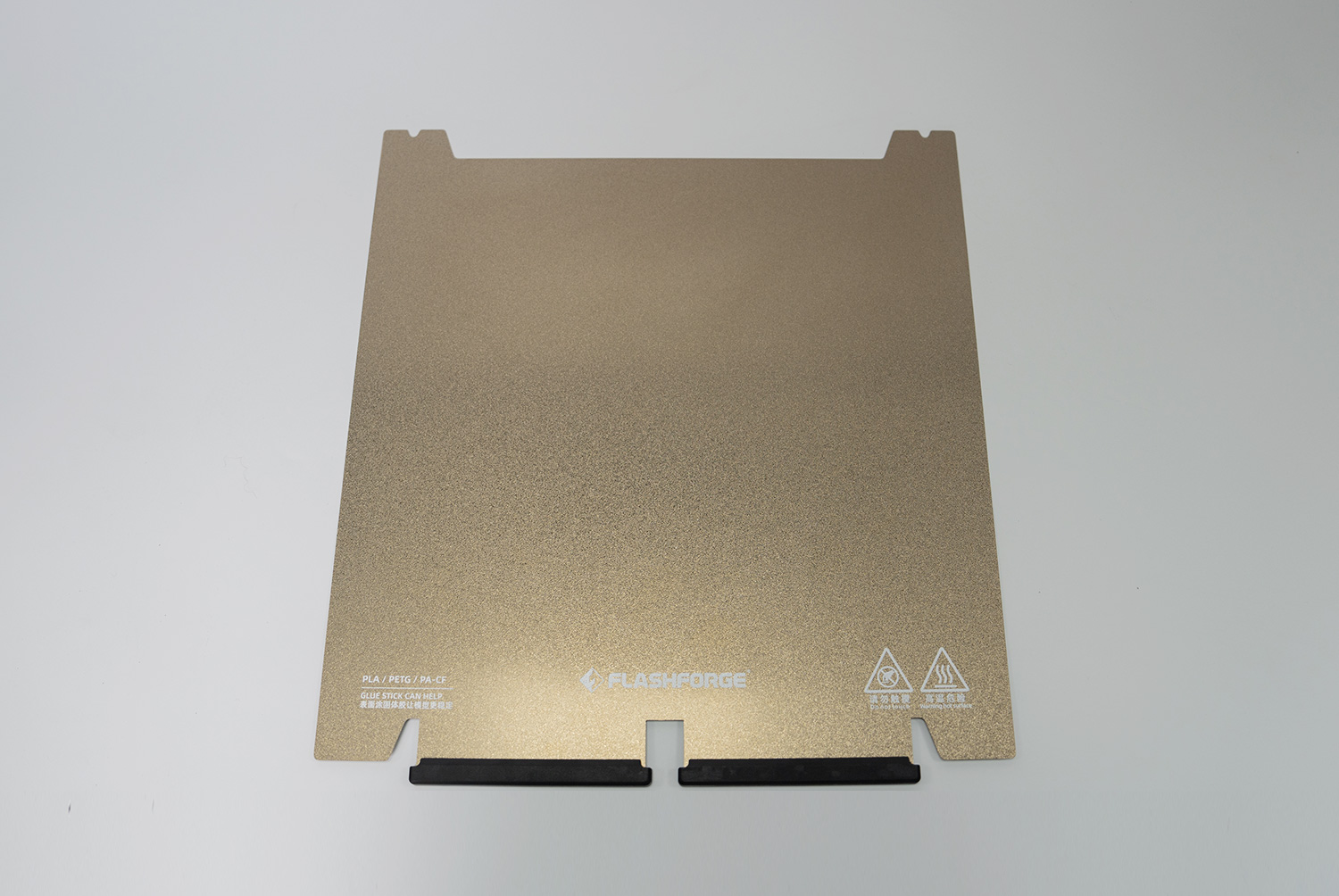
Guider 3 Ultra comes with a factory-installed flexible PEI steel sheet, which is recommended for printing PLA, PETG, PLA-CF, PETG-CF, PETG-GF, PA-CF, PA-GF, etc.
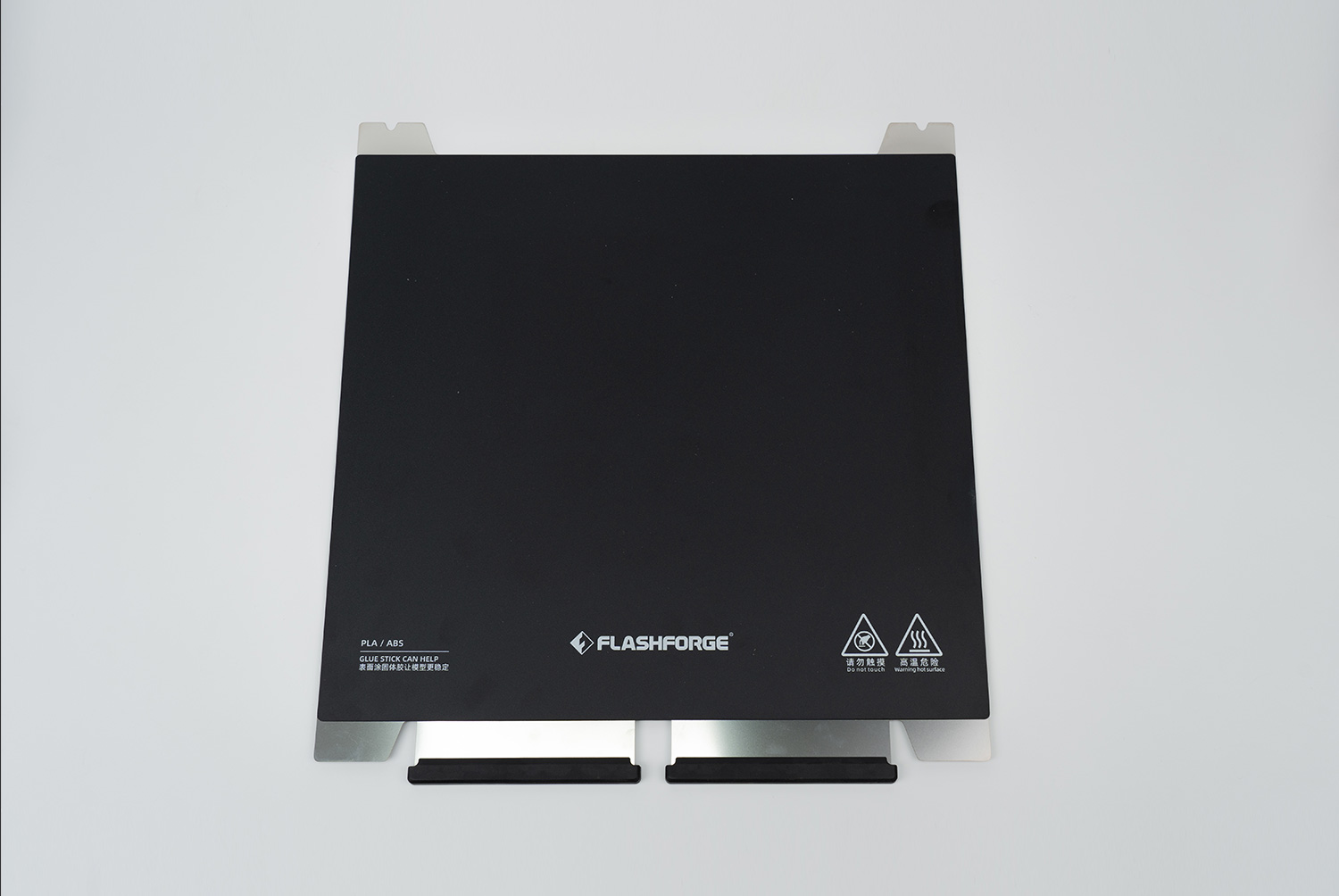
Also included in Guider 3 Ultra's accessories is a flexible PC steel sheet, which is recommended for printing ASA, ABS, PA, etc.
¶ Cooling System
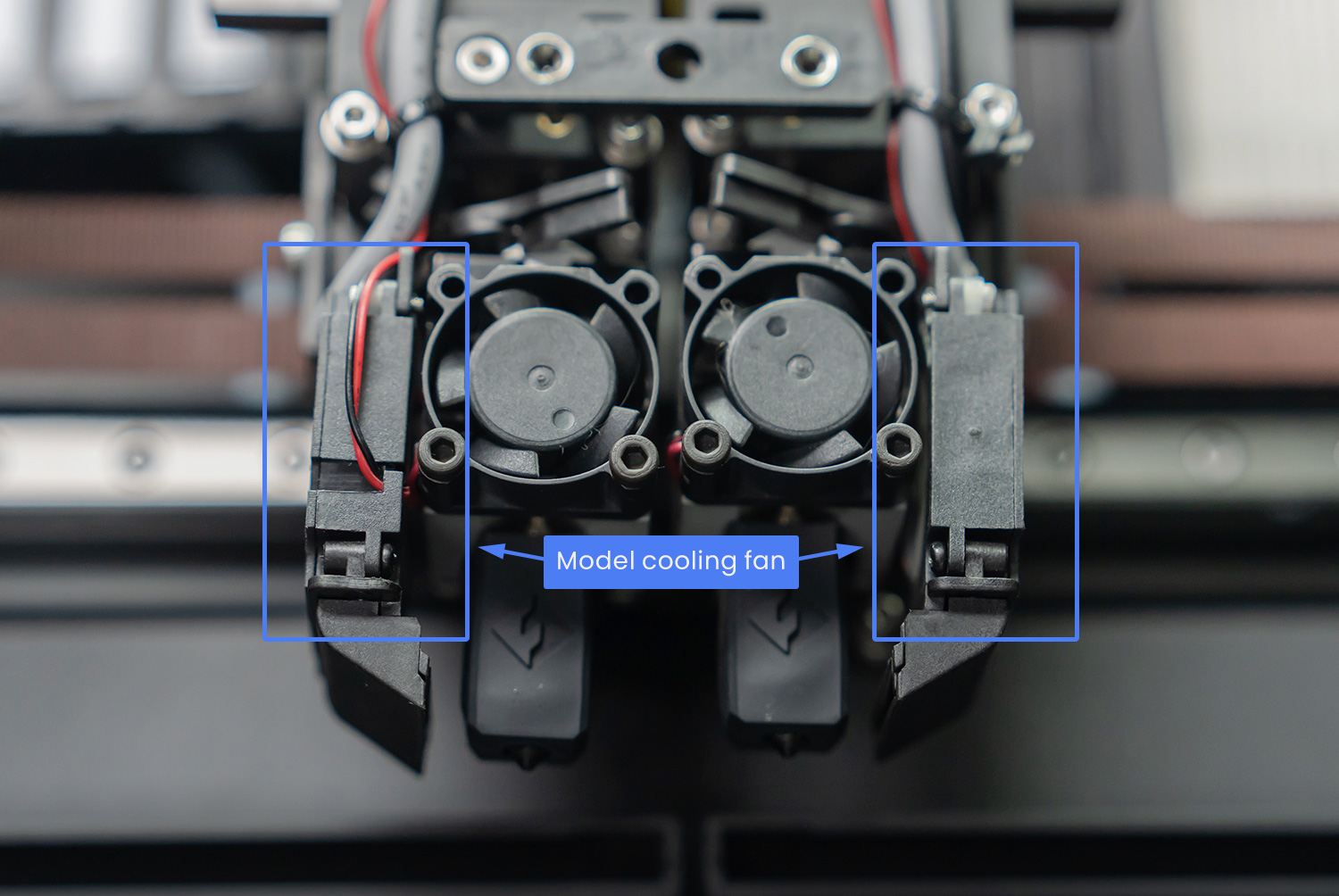
Guider 3 Ultra is equipped with two model cooling fans, and the air ducts at both sides ensure comprehensive model cooling during the printing process.
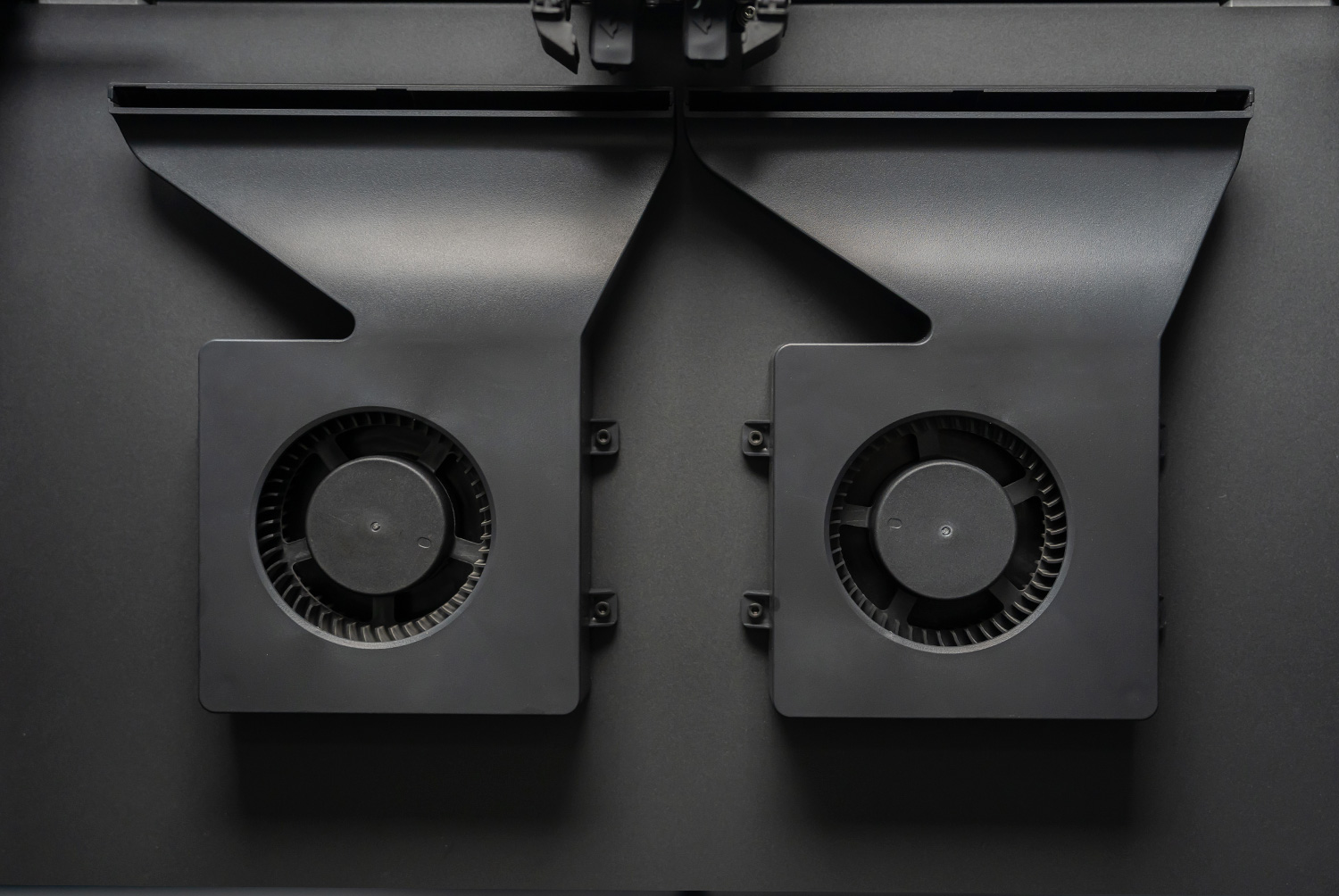
Additionally, Guider 3 Ultra features two auxiliary cooling fans to ensure rapid cooling of models during high-speed printing.
¶ Air Filtration System
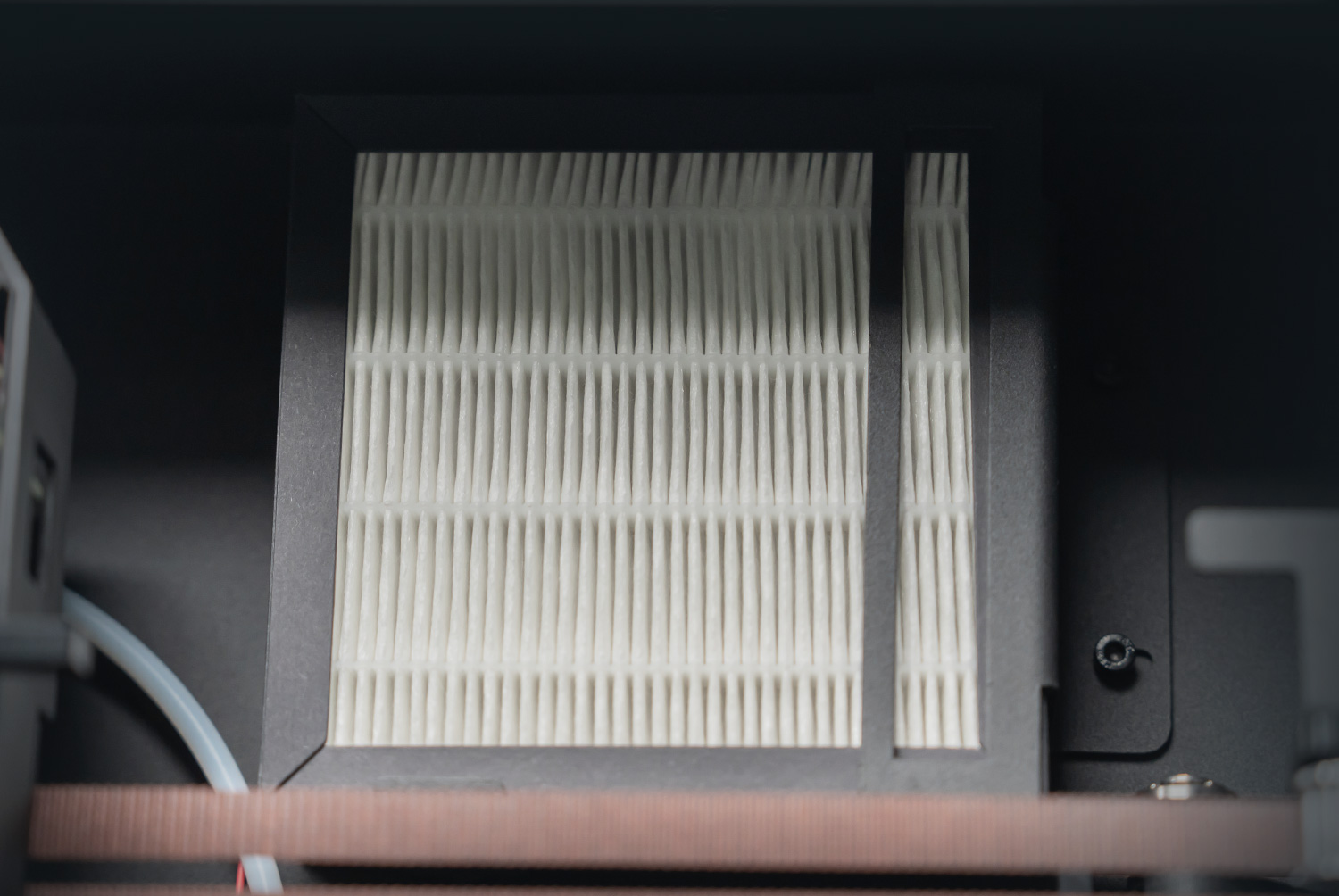
3D printers can release fine particles and volatile organic compounds (VOCs) during operation.
Guider 3 Ultra adopts a dual-layer filter system of HEPA13 and activated carbon, effectively blocking 99% of particles and VOCs, ensuring a safer working environment.
¶ Printer Back

The filament chamber is equipped with a digital hygrometer, along with areas for desiccants.
¶ Electrical Components
Guider 3 Ultra features various electrical components. Here are just some key ones.
Motherboard
Guider 3 Ultra's motherboard features a quad-core Cortex-A53 64-bit MCU, 8GB built-in storage, silent drive, 5G & 2.4G Wi-Fi, a 7-inch capacitive touch screen, and an AC rapid heating platform.
The CPU can enable functions like automatic shutdown upon print completion, pressure compensation, automatic leveling, and vibration compensation.
Pressure Sensor
Guider 3 Ultra uses a one-click full-auto leveling system, measuring the relative height between the nozzle and the platform through the pressure sensing technology and performing automatic compensation. No need for leveling tools or manual Z-axis calibration, ensuring perfect first layer quality.
Camera
Guider 3 Ultra is equipped with a camera, allowing you to monitor the printing process via the slicing software or the Cloud. The printer automatically captures photos during printing and creates time-lapse videos. Upon print completion, you can view the photos and videos directly on the printer or export them.
